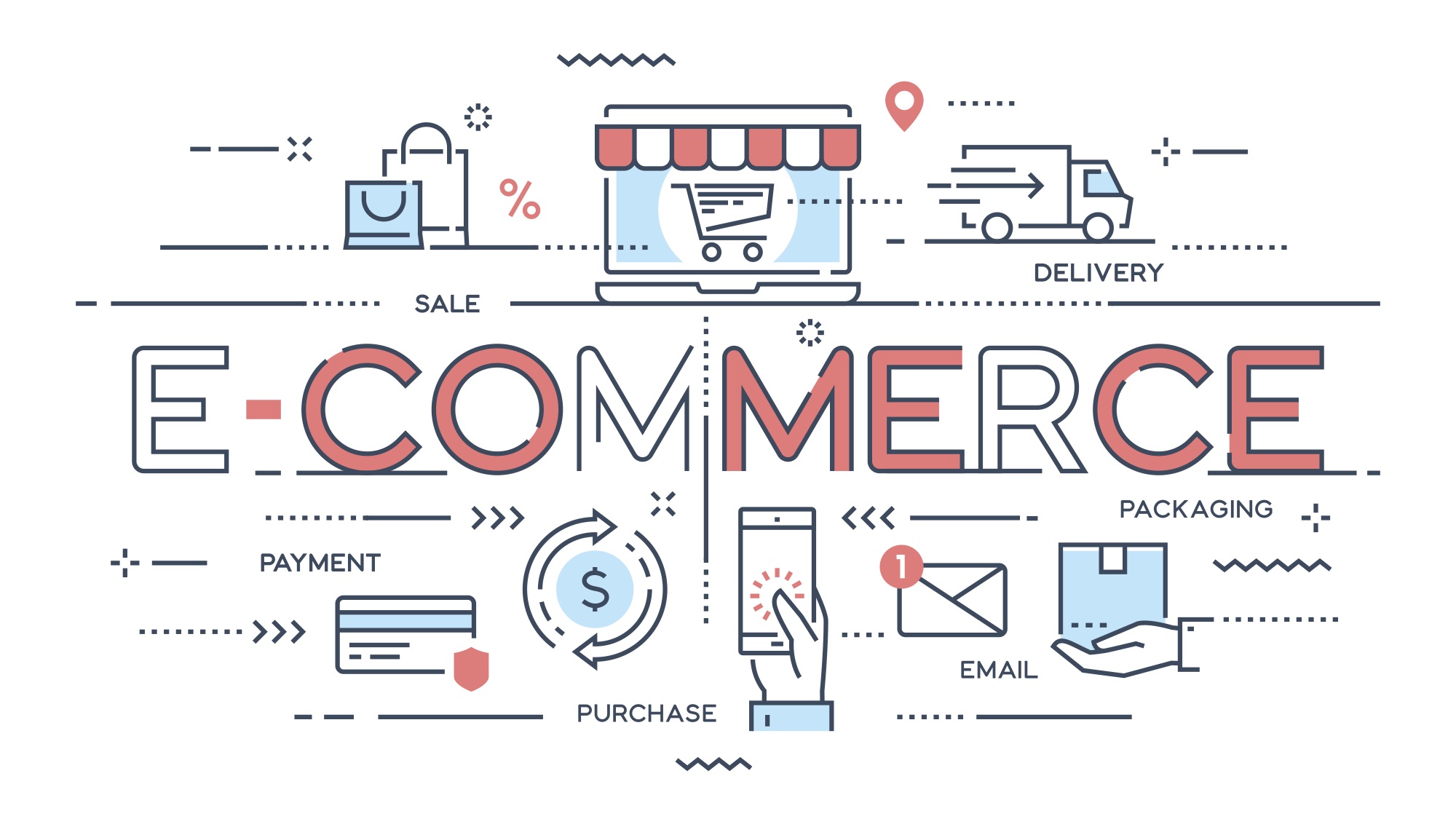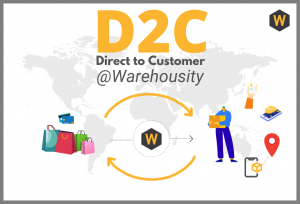Exploring the Possible of D2C Ecommerce: A Comprehensive Guide for Services
The D2C ecommerce model offers a considerable change in exactly how brands engage with customers. It makes it possible for business to bypass conventional retail networks, cultivating deeper connections and possibly increased profit margins. This approach is not without its intricacies. Recognizing the nuances of D2C ecommerce is important for brands aiming to thrive. What strategies can they embrace to browse this advancing landscape efficiently? The solutions may redefine their company techniques.
Understanding the D2C Ecommerce Design

Secret Perks of D2C Ecommerce for Brands
The D2C ecommerce model supplies brands substantial advantages, especially relating to enhanced earnings margins. By removing middlemans, firms can retain a larger share of sales revenue. In addition, this straight connection with customers cultivates enhanced brand name commitment, encouraging repeat acquisitions and long-term involvement.
Increased Profit Margins

Improved Brand Loyalty
Building on the financial benefits of D2C ecommerce, enhanced brand loyalty becomes another vital advantage for business involving directly with customers. By developing a straight connection, brand names can cultivate much deeper connections with their consumers, acquiring understandings into actions and preferences. This straight communication permits even more individualized advertising approaches, which resonate highly with customers. In addition, brands have the opportunity to regulate their messaging and customer experience, reinforcing brand name worths and constructing depend on. When consumers really feel an individual connection, they are more probable to return, promote for the brand name, and join neighborhood interaction. Eventually, boosted brand commitment not only drives repeat purchases however also grows a passionate customer base, further solidifying a brand name's position on the market.
Challenges Encountered by D2C Brands
D2C brands come across several substantial challenges that can affect their success. Supply monitoring issues can cause stock scarcities or excess, complicating procedures and consumer fulfillment. Furthermore, advertising and marketing spending plan restrictions commonly restrict the ability to successfully reach and involve target market.
Stock Management Issues
Reliable supply management provides an awesome difficulty for lots of brand names running in the direct-to-consumer (D2C) room. These brands often come to grips with fluctuating need, which can bring about overstock or stockouts, eventually impacting consumer complete satisfaction and income. Additionally, the absence of innovative inventory tracking systems can result in discrepancies in between actual supply levels and reported data, making complex order fulfillment. The varied array of items D2C brand names commonly provide additionally complicates supply administration, as variations in dimensions, designs, and colors require more careful oversight. Lots of D2C businesses may battle with minimal warehousing capacities, leading to ineffective use of area and resources. Efficient stock monitoring stays an essential hurdle for D2C brand names intending for sustainable growth and functional effectiveness.
Advertising Budget Constraints
Steering advertising and marketing spending plan restrictions is a considerable challenge for numerous direct-to-consumer (D2C) brand names. Restricted funds often limit these companies' capacity to spend in all-inclusive advertising methods, causing reduced presence in a competitive market. D2C brands often face the demand to make the most of roi (ROI) while targeting details audiences properly. This obstacle is worsened by climbing costs in electronic advertising and the necessity to allocate funds across several channels, including social media sites, online search engine, and e-mail advertising. Several D2C brands must introduce cost-efficient advertising and marketing services, leveraging organic growth methods and influencer collaborations. Eventually, successfully steering these spending plan restraints is crucial for maintaining development and achieving long-lasting earnings in the progressing ecommerce landscape.
Techniques for Constructing an Effective D2C Ecommerce Organization
As customers increasingly look for straight connections with brand names, developing an effective D2C ecommerce service requires a calculated method that prioritizes client interaction and count on. One effective approach is to produce engaging brand name narratives that resonate with target audiences, promoting psychological links. Using social networks platforms can boost exposure and promote two-way communication, allowing brand names to engage directly with customers.Moreover, individualized experiences with tailored marketing initiatives can greatly improve client retention and loyalty. Implementing commitment programs and offering exclusive bargains can even more incentivize repeat purchases.Streamlining the acquiring process is vital, making sure a straightforward interface that boosts the buying experience. Furthermore, clear communication relating to shipping and returns constructs trust fund and encourages consumer confidence.Finally, proactively seeking client comments and reacting to it demonstrates a commitment to improvement and consumer satisfaction, essential elements in the affordable D2C landscape.
Leveraging Modern Technology for Boosted Customer Experience
In today's affordable D2C ecommerce landscape, technology plays an essential role in forming customer experiences. Businesses significantly utilize sophisticated devices such as expert system, chatbots, and customized formulas to improve interactions and streamline the buying process. By incorporating these innovations, brands can offer customized product suggestions based on specific preferences and shopping actions, fostering an extra engaging experience.Moreover, receptive internet site layouts and mobile applications assure that consumers can access solutions flawlessly across numerous tools. Enhanced settlement solutions, consisting of one-click checkouts and digital pocketbooks, even more simplify deals, making it less complicated for consumers to make purchases.Data analytics also enables businesses to collect insights into client actions, enabling continual renovation of solutions and offerings. In general, leveraging modern technology not only boosts client contentment however likewise cultivates commitment, inevitably driving long-term success in the D2C ecommerce market.
Marketing Methods to Drive D2C Sales
Exactly how can brand names efficiently catch the attention of customers in a saturated market? To flourish in the direct-to-consumer (D2C) landscape, brand names must employ targeted advertising and marketing tactics. Utilizing social networks platforms, brand names can engage customers with interactive material, influencer partnerships, and user-generated posts. Customized e-mail campaigns can likewise promote a sense of link, supplying tailored promos based on customer behavior and preferences.Moreover, storytelling plays a vital duty in differentiating a brand's narrative, making it relatable and remarkable. Brands should spend in seo (SEARCH ENGINE OPTIMIZATION) to enhance presence, ensuring their items are easily visible online. Additionally, leveraging information analytics enables more info organizations to fine-tune their advertising techniques and recognize customer patterns better. Ultimately, a multi-channel approach that combines imagination with data-driven insights can greatly improve D2C sales, allowing brands to stand apart in a crowded marketplace.
Future Patterns in D2C Ecommerce
With the rapid advancement of modern technology and customer choices, the future of D2C ecommerce is poised for substantial transformation. Emerging patterns indicate a shift towards hyper-personalization, where brands leverage data analytics to customize offerings to specific consumer demands. This personalization boosts customer experiences, cultivating loyalty and engagement.Moreover, sustainability is ending up being a necessary factor, with consumers increasingly preferring brand names that prioritize eco-friendly methods - D2C Ecommerce Agency. Companies are expected to embrace clear supply chains and sustainable products to meet this demand.The integration of expert system and boosted truth will in addition reinvent the purchasing experience, permitting customers to envision items in their settings prior to acquisition. Additionally, social commerce is anticipated to grow, as platforms like Instagram and TikTok help with smooth purchasing experiences straight within social media.These patterns collectively symbolize a vibrant future for D2C ecommerce, highlighting customer-centric techniques and ingenious technologies that redefine customer communications
Often Asked Questions
What Industries Advantage Most From D2C Ecommerce?
The existing question highlights industries that grow with direct-to-consumer (D2C) ecommerce. Extremely, fashion, appeal, electronics, and food sectors leverage D2C designs to boost brand commitment, boost client partnerships, and maximize revenue margins properly.
Just How Do Shipping Prices Impact D2C Pricing Strategies?
Delivering expenses significantly influence D2C rates methods. Organizations have to stabilize these expenses with affordable prices, considering customer expectations and revenue margins. Reliable administration of delivery can enhance consumer fulfillment and drive sales in direct-to-consumer designs.
What Payment Choices Should D2C Businesses Offer?
D2C organizations should use diverse payment choices, consisting of credit/debit cards, digital wallets, and acquire currently, pay later solutions. This variety improves consumer convenience, enhances conversion rates, and caters to different consumer choices in the on the internet shopping landscape.
Just How Can D2C Brands Take Care Of Client Returns Properly?
D2C brands can deal with client returns successfully by carrying out user-friendly return policies, supplying pre paid delivery tags, and ensuring prompt refunds (D2C Ecommerce Agency). Clear interaction and structured procedures improve client fulfillment and urge repeat company
What Legal Considerations Exist for D2C Ecommerce Operations?
Legal considerations for D2C ecommerce operations consist of compliance with customer security legislations, data privacy policies, copyright legal rights, and tax needs. Brands must browse these intricacies to prevent lawful mistakes and guarantee smooth operations. By eliminating middlemans, D2C brands can offer affordable prices and promote a much more intimate connection with their customers.The D2C version is defined by its reliance on electronic systems, making it possible for brand names to utilize social media, online industries, and their own sites to engage with consumers directly. D2C ecommerce promotes the collection of valuable consumer information, enabling brands to tailor their offerings and advertising and marketing approaches successfully, eventually driving sales and boosting margins. Additionally, brand names have the opportunity to regulate their messaging and consumer experience, strengthening brand name values and developing depend on. As consumers increasingly seek straight connections with brands, developing a successful D2C ecommerce organization requires a critical technique that prioritizes consumer engagement and count on. D2C brands can manage consumer returns properly by carrying out straightforward return policies, supplying pre paid shipping tags, and guaranteeing punctual reimbursements.